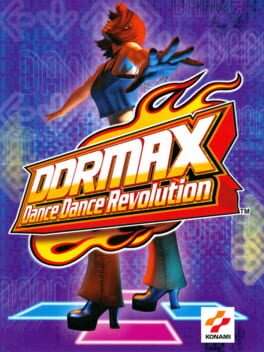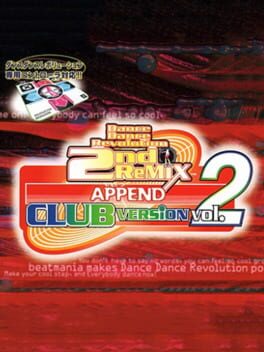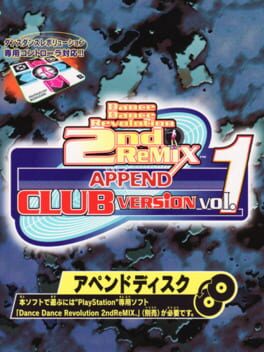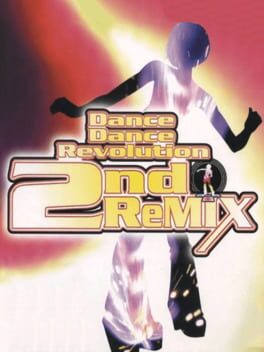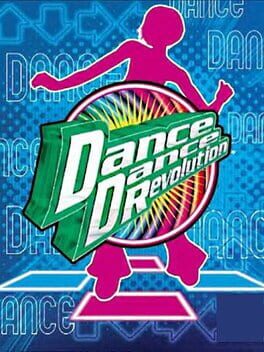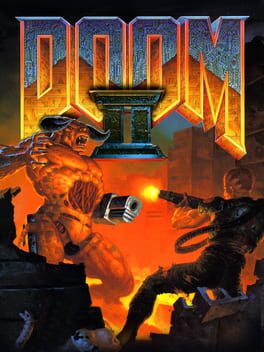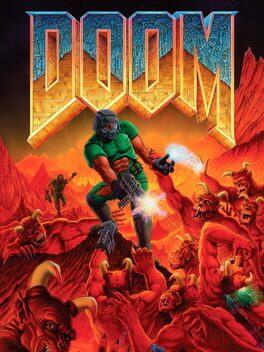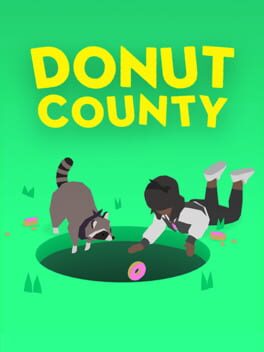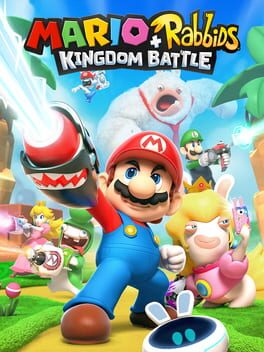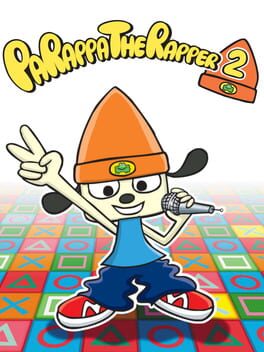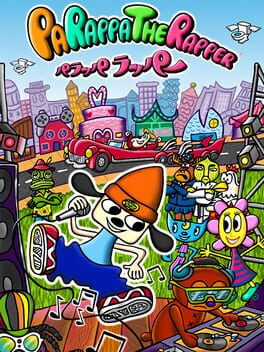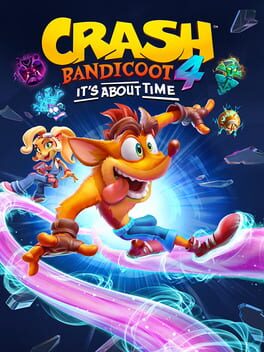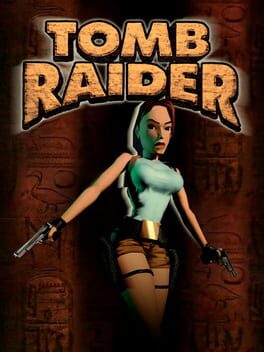kaijudave
Entering into the PS2 era of DDR entries, DDRMAX (US Version) is a fine enough entry to begin with despite being lackluster in content. The base song list is okay for the most part, but it is remarkably small compared to later entries. The unlockable songs help build it up, but you do end up repeating the whole list multiple times to get the good stuff. There is the Oni Challenge mode, but you only get 3 easy courses while the rest is gated until you unlock almost every song in the game. That's mostly all the game has to offer because by the 10th hour, you are pretty much exhausted by the monotony. This is exacerbated with a track list that has too many slow songs and little challenging step charts that aren't MAX 300 and CANDY. Konami does the bare minimum here as DDR enters the PS2 era. The only reason to pick it up nowadays is for nostalgia or if you really like the song selection here (which most doesn't return on later console entries)
After the positive impression I got from Vol. 1, I'm sad to say Vol. 2 is a bit of a letdown. The song selection is smaller and mostly remixes previous songs from Vol. 1 into "Club Versions" that honestly feel no different. The Append Club Version discs definitely could have been condensed into one, and the requirement of owning the 2ndRemix disc to play them feels considerably more bothersome knowing how little content is present on Vol. 2. I can't recommend this aside from DDR completionists.
I was honestly surprised with Append Club Version Vol. 1, as I would rather play most of the music on here than on the original 2ndRemix. It has the Beatmania classics that I enjoy like "e-motion", "5.1.1," "Diving Money," and the JJ Company songs. The step charts are considerably more of a challenge and balanced out with slower music. Different colored arrows instead of the flat arrows is a welcome change, too. I just find the presentation and style to be cooler and aesthetically pleasing. For a spin-off game, I would honestly recommend going out of your way to play this one.
2ndRemix is a respectable upgrade from the first game. With a larger selection of music, added modifiers, and new dancers, it already feels like a more complete game. Granted, a lot of this content is still barred behind codes you have to memorize. In terms of the music, you get most of the 1st Mix with some fun entries that would become classic staples like "BRILLIANT 2U," "Put Your Faith in Me," "AM-3P," and "Get Up'n Move." This title also introduces several staples of the franchise like a roulette and all music option, the E failing grade, and unlockable songs. The added pleasure of disc changing to the Club Version Vol. 1 & 2 discs is good though they arguably should have been their own titles. Overall, 2ndRemix feels like a work-in-progress that will get immediately outshined by its next entry.
[Thoughts on DDR, JP Version]
This honestly threw me for a loop and made me appreciate just how far this series has gone in terms of perfecting the difficulty system and the UI of the game mode. The core of the game is much more primitive. The lack of color differentiation between arrows of different tempo, difficulties that use a range of unhelpful phrases, and hidden modes you need an online guide to find, you could tell there was a lack of uniformity or consistency to signify the player what they were getting into. The most praise I could give is the unique song wheel that would rotate out the songs played with newer tracks. Given there's only 11 songs to choose from, this gave it the illusion there was more to play. With that in consideration, the only reason one would play this is for the song "Strictly Business," which was quickly removed from the series due to licensing. I would say unless you're interested in the history of DDR or collect the home console titles, this is inessential.
This honestly threw me for a loop and made me appreciate just how far this series has gone in terms of perfecting the difficulty system and the UI of the game mode. The core of the game is much more primitive. The lack of color differentiation between arrows of different tempo, difficulties that use a range of unhelpful phrases, and hidden modes you need an online guide to find, you could tell there was a lack of uniformity or consistency to signify the player what they were getting into. The most praise I could give is the unique song wheel that would rotate out the songs played with newer tracks. Given there's only 11 songs to choose from, this gave it the illusion there was more to play. With that in consideration, the only reason one would play this is for the song "Strictly Business," which was quickly removed from the series due to licensing. I would say unless you're interested in the history of DDR or collect the home console titles, this is inessential.
2019
My impression of DOOM II after finishing the first game for the first time is that it's more of the same fun you come to expect. The added depth from new weapons, enemies, map and environment changes really help flesh out the solo campaign. While nothing of the actual look and feel of the game is different from DOOM, the sequel somehow manages to garner its own identity despite being the same engine. I do think it would have been better to cut down on the number of maps you have to traverse with arguably monotonous environments, but I can understand wanting to strike while the iron is hot at the time of its release. There was nothing else quite like DOOM at the time, so why not have even more of my precious life shaved saving the world from biblically-correct demons.
2019
As someone who is still fairly new to FPS games, I'm really glad I enjoyed myself with this game. My first impressions of such an iconic title I've only seen on-screen over the years was that you mostly run-and-gun demons while awesome MIDI numbers play. I'm ecstatic to know this is the case and it's an awesome feeling when things go your way. That's not everything DOOM is though as puzzles, traps, platforming tricks, and secrets bring in so much depth to one's playthrough. It's one of the reasons this game lives on to inspire and influence everything it touches. My only nitpick is that I found out early on that the bobbing motion made me nauseous but thankfully the settings mostly fixed the issue.
Compared to the original 3DO version, the Saturn version is such a massive downgrade. Sure, menu graphics on a majority of Saturn games look simplistic and cheesy nowadays, but it would have been nice to have a 1-to-1 translation of the menu UI. At the very least this game plays pretty well, the music is relaxing, and the transitions between gold course sections are pleasing enough. It still has Craig Stadler's goofy portrait narrating your journey and it's always fun to see the other FMV characters with their silly golf get-ups. As a golf game it's primitive-looking but I can see the charm.
2021
2018
I was sold on the game on the basis that it had a mischievous talking raccoon as a main character, although you don't play as him. You play as the cause for the disasters of Donut County--the hole! While the puzzles of each little world you're in are not that complicated, there's a lot of humor and fun to be had with environment interactions. The characters you meet as the story progresses add a lot of color to this town. You get to know them more intimately through each puzzle-ready world you step in, which is such a creative touch. The music done by Daniel Koestner sells the cutesy, warm aesthetic of the smooth polygon world of Donut County. It is also amazingly to listen to on its own. The only major issue I had with the game is that it's very short with little replay value. There's not much new to replay if you end up sucking up every possible object in the game on first playthrough. It feels prime for some DLC or alternate takes on its puzzles but as it stands, it at least feels like a complete gameplay experience.
I took a chance on this game from a friend's honest recommendation and it was on sale at the time. I'm not familiar with turn-based strategy games, so I was going in blind on both its unique setting and gameplay. I was honestly not expecting much because of its ridiculous cross-over concept, but that level of freedom in silliness and humor is what made this an enjoyable experience. It added greatly to what I felt to be a solid turn-based combat system, utilizing weapons and boosts that make sense to each character. It makes a great introduction to its turn-based system and builds upon it with skill trees and a diverse roster. Within the first few hours I was heavily invested in making sure I got the most out of this game, which is something any game should strive to make a player feel. If you haven't gotten into the turn-based genre, this is actually a great place to start, too. I eagerly await the sequel as I get through the expanded DLC next.
2001
My big expectation for the sequel was that it would fix and improve the janky nature of the original and smooth it out with a more friendly introduction for new players, and that's pretty much how it rolls. I very much appreciate the practice tutorials before each song, the expanded game world of PaRappa, and the more forgiving button input. It does what any good sequel should, and it's pretty much up to preference whether you think the original had stronger songs than the sequel. There is really nothing much to complain for a well-put rhythm game.
PaRappa is a short and fulfilling little game that is certainly not worth the amount of money it went for at retail nor in today's secondary market (speaking of the PS1 release of course). That being said, just because it's short doesn't mean it's a breeze. Whether you're playing the original or the remaster, most of your playthrough will be spent mastering the timing correctly. It's pretty much essential to your progress. While it sounds frustrating on paper, the game does a good job in every other department from the bouncy rap music to the funnily-designed characters and the colorful aesthetic. Even now it's still a noteworthy rhythm-game to play through.
It feels strange to admit while I did grow up playing Crash games, they were mostly spin-offs like the cart racers and Crash Bash. I don't think I ever properly sat through the original trilogy until the 2017 remakes. While I did enjoy the remake, Crash 4 was the one to really click with me. It may be that all it took was for the franchise to be modernized and given a proper treatment, with well-animated characters and a goofy story to complement. Throwing away old habits like limited lives improves a game, who could have guessed. What does make this stand out is the collect-a-thon challenges and oodles of extra content that flows like an endless river. I also appreciate that it's not a copy-paste of the game physics from the trilogy remake, and instead forges its own mechanics with levels that work with those conditions. Everything about this game is well-made from the ground up, making it a great gateway into the Crash franchise.
1996
For as much as I appreciate the Tomb Raider franchise, I can't say the same for the first game. It's one I like in concept, and I love watching others play it, but I've decided this game is just not for me when it comes down to picking up the controller and trying it out. I find picking up items frustrating. Keeping track of where I'm going while also making sure Croft's positioning is correct is a nightmare. Having no sense of direction as I hit endless corridors of dead ends, traps, and vicious animals behind me gives me endless anxiety. It has never been a fun time for me, yet I can understand how satisfying the gameplay is when something goes your way. Doing cool flips while gunning down your enemy is the most badass thing. What I can say has given Tomb Raider its lasting power is the cutscenes and ever-changing environments the deeper you progress. I know what fucked up shit happens in this game. Even with the advancement of game graphics, Tomb Raider wouldn't and doesn't feel as raw as it does without the blocky textures. Despite how primitive and dated this game is, it's also precisely why it works at all.
